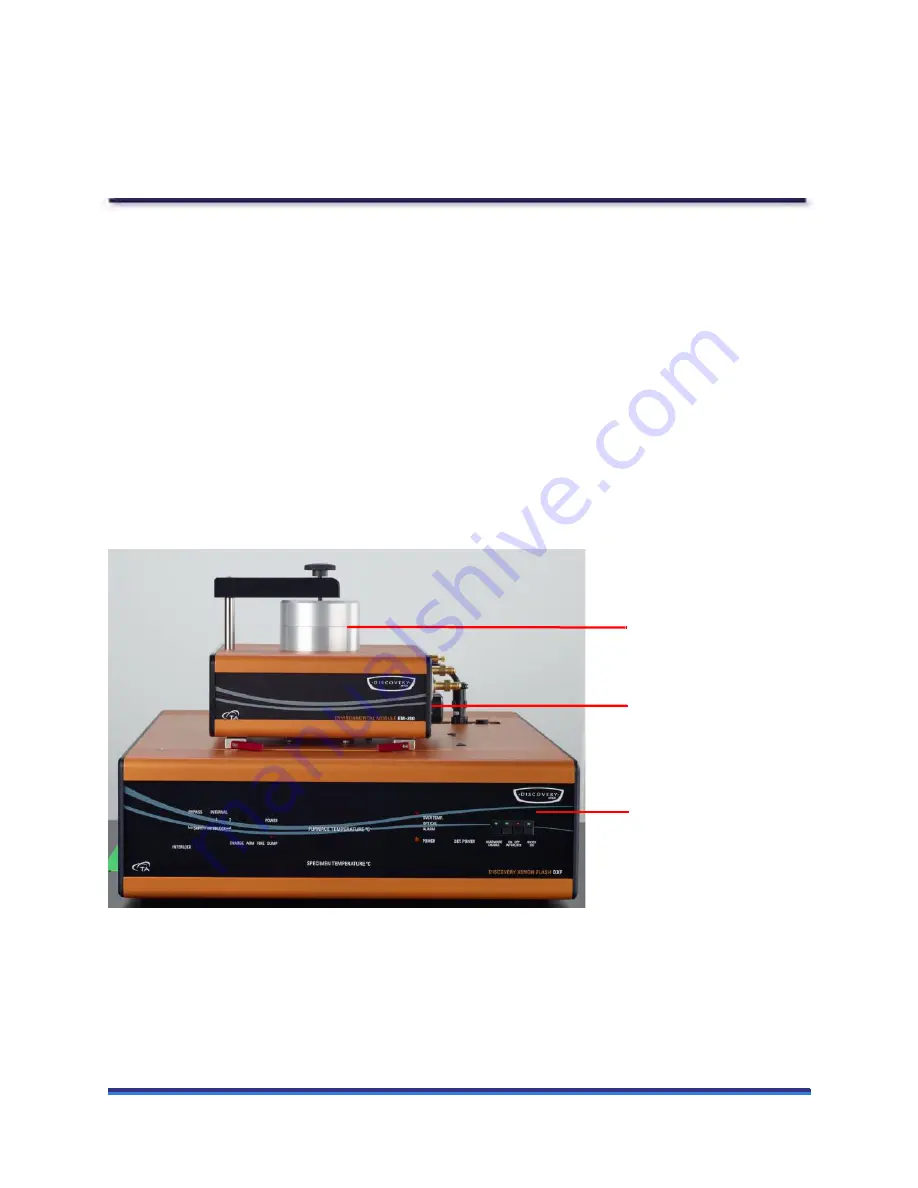
DXF-200 Getting Started Guide
Page 9
Chapter 1:
Introducing the Discovery Xenon Flash
Overview
Thermal diffusivity (
α
) is the thermophysical property defined as a ratio of thermal conductivity and volu-
metric heat capacity. The thermal diffusivity is measured in cm
2
/s (SI units). The most popular method
used for measuring thermal diffusivity is the flash method. It has the advantage of being fast while provid-
ing values with excellent accuracy and reproducibility. The flash diffusivity method involves uniform irra-
diation of a small, disc-shaped specimen over its front face with a very short pulse of energy. The time-
temperature history of the rear face is recorded through high-speed data acquisition from a solid-state pins
sensor with very fast thermal response, and thermal diffusivity is determined from the time-dependent ther-
mogram of the rear face. Thermal conductivity can be calculated as a product of the thermal diffusivity, the
specific heat, and the density of the material. A Discovery Xenon Flash (DXF) system automatically deter-
mines the thermal conductivity using the measured (or separately entered) specific heat capacity and ther-
mal diffusivity, with separately-entered density data.
The DXF system is comprised of a DXF Pulse Source, Environmental Module, Solid State (Pins) Detector
Assembly, and associated software.
Figure 1
DXF system with EM-200 and Solid State (Pins) Detector Assembly.
Solid State (Pins) Detector
Assembly
Environmental Module
DXF
























